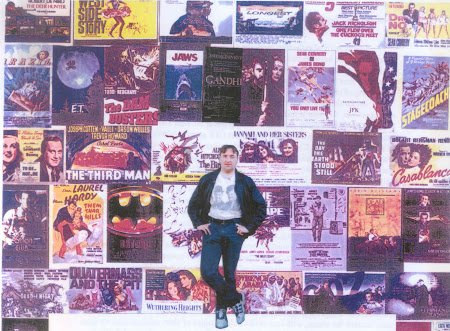Kevin Brownlow and Andrew Mollo however, brought these elements sharply into perspective, drawing on the experience of the French just across the Channel, and transposed it into a chillingly believable occupied Britain of 1940. It was also in Brownlow's small way - as someone who wasn't personally involved in the war - his own WWII film as a tribute to those who gave their lives to fight fascism, by demonstrating what would have happened if they hadn't.
On a threadbare budget, Brownlow's initial concept was brilliantly and economically filmed with the support of fellow film student Andrew Mollo who worked on the authenticity of the uniforms and the general militaristic look of the film, the two young film makers using whatever out of the way run-down - and still bombed-out - locations they could find in the 1950s, with the remainder of the budget covered by Woodfall films in 1964, who provided the means for the minor dramatic framework of a nurse (Pauline Murray) resettled into London after her local village is attacked by partisans.

My own curiosity in the film was aroused by the presence in the (mostly non-professional) cast of Sebastian Shaw - the original Anakin Skywalker himself, from the original Return of the Jedi. (Not only Shaw, but also a future cinematographer for The Empire Strikes Back, Peter Suschitzky, also got his first break on It Happened Here.) Murray's experiences with her old friends when contrasted with her harsh new fascist masters, underline the difficulties that face those who actually were occupied during WWII, that the rest of us all too easily brush under the carpet.
Nurse Murray watches her friends about to be arrested outside Belsize Square
The ending to the film, where our erstwhile nurse is tending to the wounded (of either side), was probably the best the makers could manage given the budget, but still makes a telling anti-war message. Wars don't just end like that - hostilities may cease, but for the ordinary person it is a severe period of recovery and recuperation, as the wounds dig deep and take their time to heal. It should also be noted that the effects of Britain's sacrifice in World War II were still being felt for years afterwards - rationing remember, was not removed until nearly 10 years after the war.
There have been many versions of an alternative Nazi future (including most recently, a bizarre Nazi-style future dictatorship in the blockbuster V for Vendetta), but It Happened Here is by far the best, most chillingly authentic depiction, without dwelling upon obvious imagery such as Hitler at 10 Downing Street or swastikas over Buckingham Palace. No, what is at work here is a much more persuasive, downbeat documentary-type view felt very much by those at the ground level, which adds to its chillingness as a depiction of day-to-day ordinary life in extraordinary - and thankfully hypothetical - circumstances.





No comments:
Post a Comment